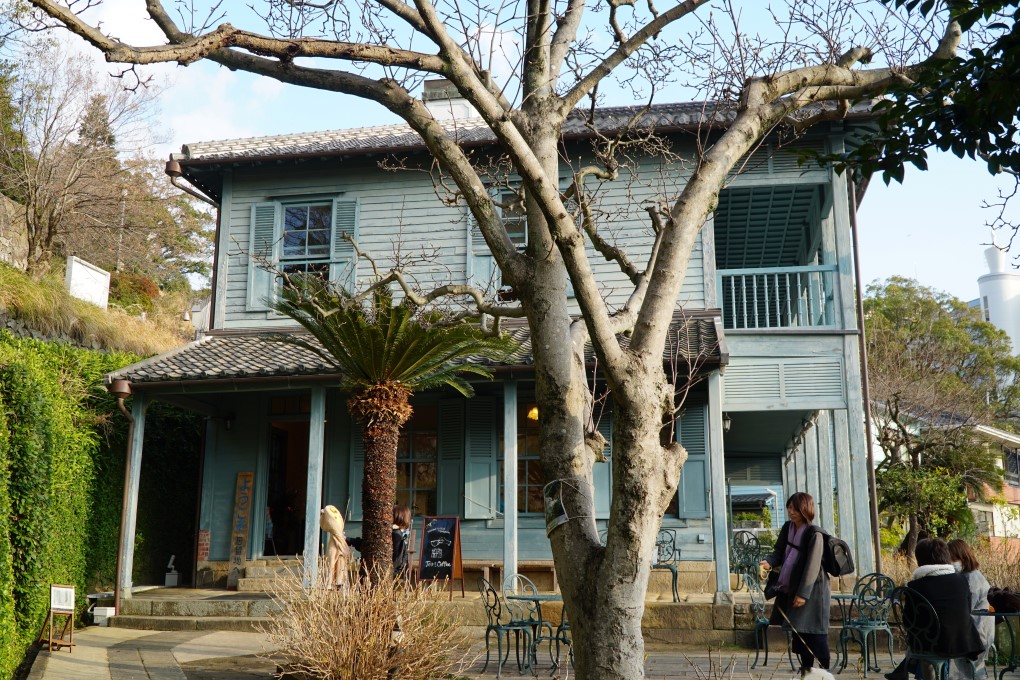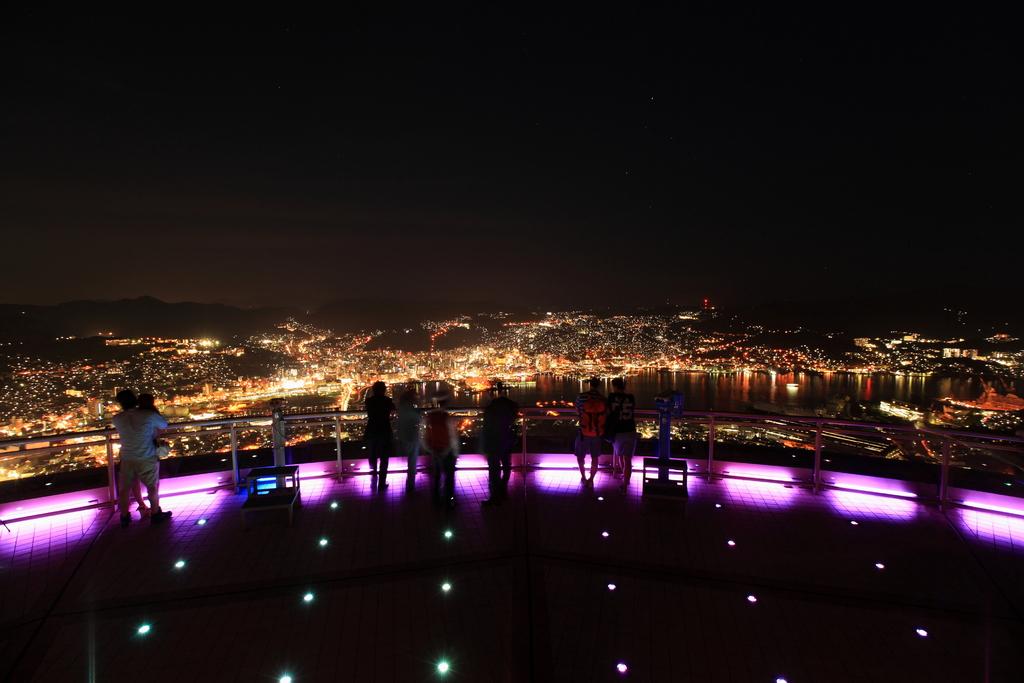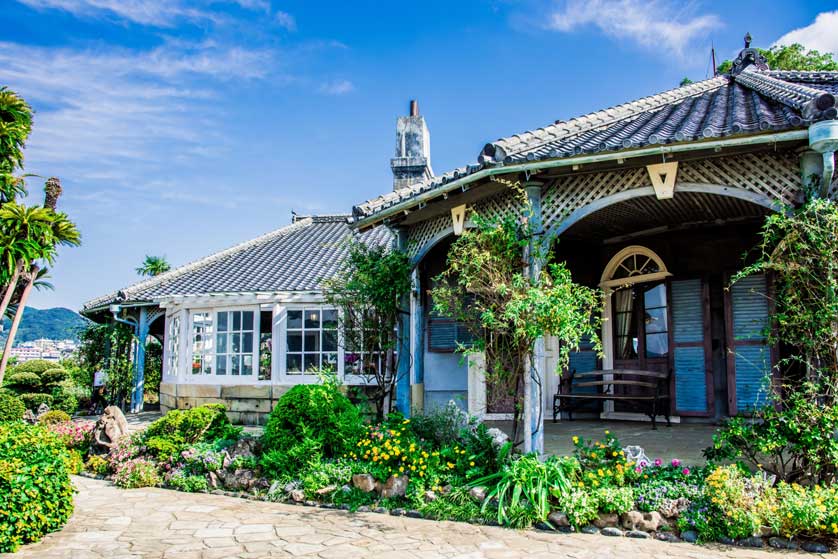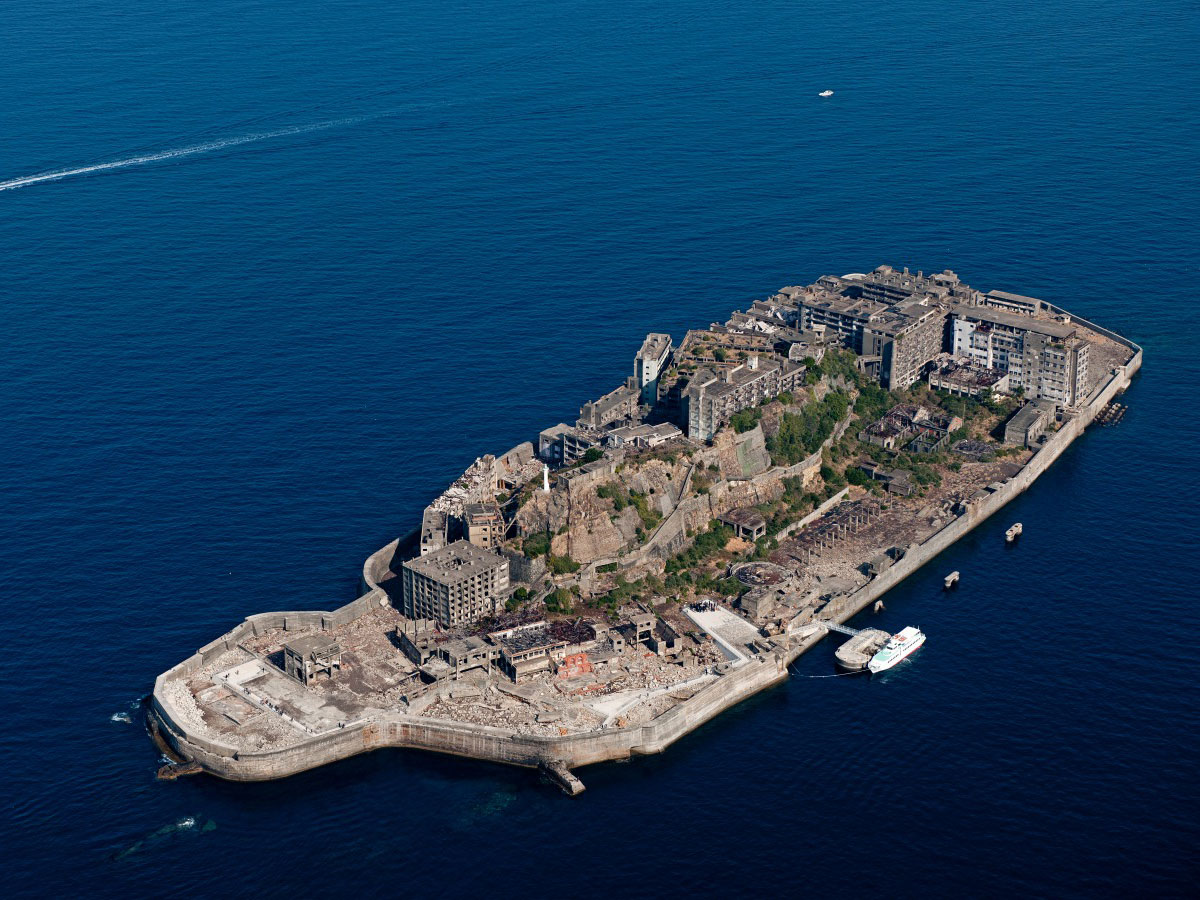There are numerous spectacular sights and things to do in Nagasaki. Therefore, stopping in Nagasaki when touring Japan is undoubtedly worthwhile. You can see one of the top three nightscapes in the world from Mount Inasa. And Battleship Island is frequently listed as one of the top destinations for international visitors. Here are the top 4 things to do in Nagasaki.
Things to do in Nagasaki
1. Nagasaki Dutch Slope

The city of Nagasaki is renowned for having many slopes. Mountains around the city, and they are dotted with several private residences. The Higashi-Yamate and Minami-Yamate portions of Oura Ward and Dejima became residential zones, symbolizing self-governing districts for foreign residents with extraterritorial rights, starting in 1858 when the country was opened during the end of the Edo Era.
Higashi-Yamate is well-known even within the formerly residential neighbourhood of Dutch Slope. When the first Protestant Anglican Church gathering hall in Japan was built there in 1862, the locals of Nagasaki began referring to all foreigners as “Dutch-san,” and the incline that they all had to climb to get to Sunday services became known as Dutch Slope or “Oranda-zaka.” The American-built Kwassui High School for female students, the Higashi-Yamate Juniban-kan Mansion, the seven Western-style homes of Higashi-Yamate, the evocative stone pavements, walls, and ditches, as well as brick walls, are all along Dutch Slope. The Higashi-Yamate Juniban-kan Mansion previously served as the Russian consulate, is now the Historical Museum for Private Schools.
2. Mount Inasa

View the stunning nighttime scenery of Nagasaki Harbor from Mt. Inasa’s observation deck, which is regarded as having one of the top three night views in both Japan and the entire world. The expansive 360-degree panoramic vista is the attraction.
Aong with Mt. Hakodate in Hakodate and Mt. Rokko in Kobe, may be seen from Mt. Inasa’s observation deck. Along with Monaco and Hong Kong, it was additionally chosen in 2012 as one of the finest three night vistas in the world. The view from Mt. Inasa is known as the $10 million night view, and from the glass-enclosed, cylindrical View Tower at the summit of the mountain (altitude 333 m), you can take in a 360-degree panorama. You may enjoy the night view at your own speed even in bad weather because the basement floor and the two floors above ground are completely enclosed in glass. The view from the open roof is also breathtaking.
With the Urakami River meandering through the city and plenty of undulating topography, the afternoon panorama has a different feel. Your eyes can take in Nagasaki Harbor and Nagasaki itself, and if the weather is good, you can see as far as the Goto Islands, Unzen, and Amakusa. Coming right before sunset is advised if you want to view both sorts of sceneries. On the observation deck, there is a restaurant where you may eat and drink while taking in the nighttime scenery.
3. Glover Garden
These six structures, three of which—Glover Residence, Ringer House, and Alt House—have been recognized by the federal government as Important Cultural Properties, were spread out throughout the city in the 1860s as Western-style structures, and were later demolished and renovated. These homes belonged to traders who cherished Nagasaki and resided there. The interiors have been meticulously restored to depict the way of life at the time.
The Glover Residence, the oldest surviving wooden Western-style mansion in Japan, belonged to the ship and weapon trader Thomas Blake Glover, who was born in Scotland. He was found to have helped send numerous young Japanese individuals abroad to study in addition to his role as a foreign trader for Japan’s reconstruction.

Furthermore, Glover pioneered in the industries of shipbuilding, mining, fishing, steel manufacture, minting, and beer production. He also made contributions to current scientific technology in Japan. It is known that Glover had been a historic mastermind supporting reformation at that time. It is said that there is a hidden windowless room in the roof above the corridor by his wife’s room in the Glover Residence from which the patriots during the final years of the Tokugawa shogunate went in and out.
Glover Garden was constructed on a slope that reflects Nagasaki’s distinctive topography. From the residential garden, you can take in sweeping views of Nagasaki Harbor and Mt. Inasa. The garden also features flowers that are grown in each of the four seasons. Seasonal night lighting is also offered so you may take advantage of the ambiance. In particular, there is a beer garden within the garden area where you can eat in an open setting while admiring an 1860s scenery and the contemporary and stunning night view and things to do in Nagasaki during the summer (end of July to beginning of October). Additionally, there is live music on the weekends.
4. Gunkanjima (Battleship Island)

People lived in close quarters during the Golden Age of coal mining, with a population density that was more than nine times that of Tokyo. On a barren island with abandoned structures that has been there for 30 years, life has continued much as it did in those days.
Around 1810, coal was discovered on the island of Hashima, which is about 30 minutes by boat from Nagasaki Harbor. About 80 years later, in 1890, Mitsubishi purchased the rights to the mining regions for the entire island and started actively mining coal. Because of its battleship-like design, the island was given the name Gunkanjima. The island functioned as a whole city because more than half of it was rich in ore and the other half was crammed with hospitals, schools, temples, shrines, police stations, movie theaters, barber shops, etc.
The population density was the highest in the world and more than nine times that of Tokyo in the 1960s, when there were 5,300 residents living there. It was a near-future city that used cutting-edge technology, channeling modern metropolises, with the first high-rise reinforced concrete apartment complexes in Japan, an undersea water supply that was created by Japan, the first roof gardens in the country, etc.
However, there was a downward trend as the country switched from using coal as its primary energy source to using oil. The mine was shut down in January 1974, and by April, every last resident had fled, leaving Gunkanjima completely empty. People have been forbidden from visiting the island ever since, but starting in 2009, field visits and tourism were permitted.
The island as a whole has been preserved as it was during its heyday, and one can sense what Japan was like during the period of great growth despite the presence of abandoned buildings, home gadgets, starting with TV sets, and other evidence of existence. There are a few trip operators, and fast ships sail out of Nagasaki Harbor. Visits are conducted by sailing once around the island of Gunkanjima, which has a high concentration of dilapidated reinforced concrete buildings. Then, visitors enter the island, where they can take an hour-long tour with a guide.
Conclusion
Nagasaki has done extraordinarily well to restore its former glory after rising from the ashes of a tragic past. It is now one of the top destinations for tourists visiting Japan, offering a ton of entertaining things to do in Nagasaki.
Please read: http://animagplus.net/2022/07/stock-trading-platforms-for-beginners.html
